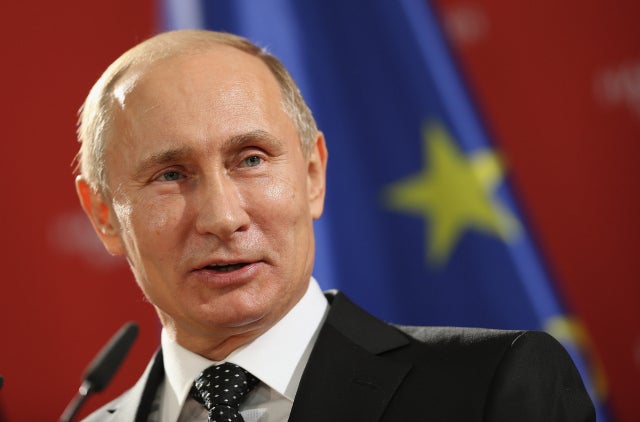Who killed Kennedy? The CIA.
Who introduced AIDS to Africa? The CIA.
Sure, it’s crazy talk. But those stories were two of Moscow’s most successful disinformation campaigns during the Cold War.
And now Vladimir Putin is reviving these dirty tricks.
That’s the argument made in Disinformation: Former Spy Chief Reveals Secret Strategies for Undermining Freedom, Attacking Religion, and Promoting Terrorism, co-authored by Ion Pacepa, an ex-intelligence officer who defected from Romania in 1978, and Ronald Rychlak, a professor at the University of Mississippi. And what’s happened during the Ukraine crisis surely supports their thesis.
In the early days of protest in Kiev’s Independence Square, numerous stories, many promoted by the English-language Russia Today, reported that the demonstrations were engineered by a collection of skinheads, neo-Nazis and anti-Semites, backed by London financiers, Wall Street bankers and–yep–the CIA.
The main difference between the “new” Moscow and the old regime is that Putin has some new tools in his tool kit, including an impressive array of cyber-weapons.
And he seems happy to use them.
When Putin marched on Crimea, the Western press barely noted the cyber-skirmishing that preceded and accompanied the troops and tanks. Targeted insertion of malware, denial of service attacks, and lots of trolls and socket-puppets spreading disinformation through social networks–all were in evidence.
It wasn’t the first time that nations earning the Kremlin’s ire have been the target of cyberattacks. But this time it was done more subtly. Moscow’s earlier forays in cyberwarfare–against Estonia and Georgia, for example–were the digital equivalent carpet bombings. Virtually the entire government cyber-structure came under a massive online assault in those instances.
The cyberwar against Ukraine, though no less malicious, has thus far been conducted with a lighter, more sophisticated touch. It appears to be well synchronized with Moscow’s ground operations and complementary with its overall effort to suppress or shut out foreign journalists.
Clearly, the Russians are getting much more clever and efficient in integrating cyberwarfare techniques with their usual physical and psychological warfare.
And clearly, Putin is less interested in “resetting” relations with the West and more interested in rewriting the map on Russia’s western borders. The big question now, after Georgia and Ukraine: What happens next time, when Putin feels the need to intervene on behalf of “ethnic” Russians in a Baltic nation–one that happens to be a member of NATO?
The rise of Putin is not the beginning of a second Cold War. Moscow is a second-rate power that can’t compete with the United States. But Russia is a country with more than enough weapons in its arsenal to start troubles that will be difficult to end.
As a first step, the U.S. has to stop being an enabler of bad behavior. The White House must send a message that Moscow had its chance to be a responsible member of the international community … and it blew it.
President Obama should start by pulling the U.S. out of New START. Abrogating the treaty would declare the rather obvious fact that Putin is no reliable partner in arms control.
New START never offered any strategic benefits to the United States. The U.S. offered it as a statement of “goodwill,” in the hope that Russia would then partner in further efforts to reduce the global nuclear arsenal. But in the last few weeks, Moscow has shown it remains far more interested in adding territory rather than reducing nuclear weapons.
From dirty tricks to territorial expansionism, Putin has demonstrated his desire to emulate the Soviet Union, not put it in the past. It is time for our president to turn his back on a false friend.
Originally published in the Washington Examiner.































